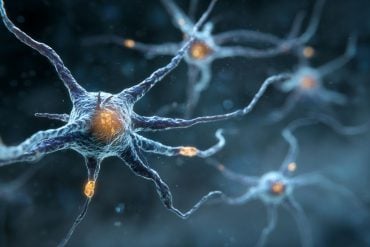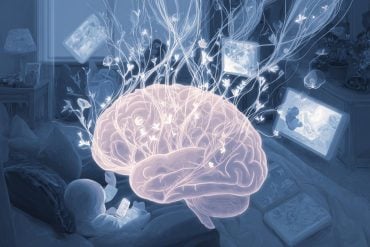Summary: Memory helps us make sense of the present by retrieving past experiences based on either surface-level similarities or deeper conceptual connections. A new study reveals that when a familiar mental category — like excuses or conflicts — is available, memory prioritizes structural, abstract links over superficial cues.
This insight clarifies when memory leans on meaningful patterns, supporting deeper understanding and learning. The findings could inform teaching strategies that foster conceptual thinking and better knowledge transfer in students.
Key Facts:
- Concept Over Context: Memory favors structural similarities when tied to familiar mental categories.
- Surface Default: When no such category exists, memory defaults to surface-level cues.
- Educational Impact: Teaching mental categories can improve students’ ability to transfer knowledge conceptually.
Source: University of Geneva
If memories are the black box of our past, they can also shed light on the present by giving meaning to new situations. But how does memory retrieve either surface matches (based on same places, same people) or deeper, more conceptual ones (based on similar intentions or actions)?
A team from the University of Geneva (UNIGE) has shed light on this question, showing that memory tends to favour the substance of a situation —its concept or underlying problem — when it can be linked to familiar mental categories. Otherwise, it defaults to surface-level cues.

These findings open up new possibilities for enhancing analogical learning, particularly in educational settings.
The results have been published in Wiley Interdisciplinary Reviews: Cognitive Science.
Proust’s famous ‘‘madeleine’’ is a striking example of our brain’s tendency to connect present situations with past experiences to make sense of them. It illustrates a well-known phenomenon in psychology, in which sensations — also called surface similarities — can bring a memory back to life.
More recently, in 2020, the IDEA team (Instruction, Development, Education and Learning) at the UNIGE’s Faculty of Psychology and Educational Sciences showed that more abstract cues — known as structural similarities, such as similar actions, problems or intentions — can sometimes take precedence and guide memory retrieval.
For example, when we invite someone to dinner in a restaurant and they decline, saying they have another appointment. Our memory may bring back a surface memory: the memory of a dinner with this friend a few weeks earlier, in the same restaurant.
Or a structural memory: the time when we used knee pain as an excuse to avoid sports training. In the latter case, the context is different but the concept is similar: it’s all about finding an excuse to decline the invitation.
The end of a debate
When does memory rely on one type of cue over another? This question has long fueled debate within the scientific community. Now, the IDEA team has offered a decisive insight.
“We’ve discovered that memory favours structural connections when it can draw on a familiar mental category — such as excuses, superstitions, or conflicts — and surface connections when no such category is available.
“Structural memories reflect a higher level of abstraction, and therefore deeper understanding,” explains Lucas Raynal, postdoctoral researcher with the IDEA team and lead author of the study.
These results were obtained by analysing around a hundred studies published over the past fifty years on memory mechanisms.
“This literature review allowed us to identify consistent patterns and to develop a psychological model explaining the contexts in which memory favours one type of cue over another,” explains Emmanuel Sander, full professor with the IDEA team and lead researcher on the project.
These conclusions have practical implications for promoting knowledge transfer in schools. Previous research has shown that difficulties in applying a concept learned from one example to a superficially different example often stem from challenges in recalling cases based on structural similarities.
For instance, when presented with a math problem involving a customer at a bakery, a student might not recognize that it requires the same type of calculation as another exercise about a sporting event, simply because the context of the story has changed.
These results highlight the importance of anticipating pupils’ difficulties when they lack the necessary knowledge to connect different examples of an unfamiliar concept. They thus call for the development of teaching tools designed to introduce new mental categories, encouraging the formation of deep conceptual links.
About this memory research news
Author: Antoine Guenot
Source: University of Geneva
Contact: Antoine Guenot – University of Geneva
Image: The image is credited to Neuroscience News
Original Research: Closed access.
“ADAPTER: A Conceptual Model of Category-Driven Analogical Retrieval” by Emmanuel Sander et al. Wiley Interdisciplinary Reviews Cognitive Science
Abstract
ADAPTER: A Conceptual Model of Category-Driven Analogical Retrieval
Research on analogy-making agrees that mapping allows one to find structural similarities when comparing two situations. However, whether retrieval of past events from memory is guided by surface or structural similarities remains subject to empirical debate.
The current contribution is aimed at dissolving this controversy by reviewing experimental evidence showing that the determinants of analogical retrieval primarily depend on the encoding of the situations, which is itself modulated by prior categories available to the participants.
Based on this review, a conceptual model is introduced (ADAPTER, As Deep As Possible Target Encoding and Retrieval), in which available categories determine the level of abstraction characterizing encoding as well as the type of retrieval that can be implemented.
The model also incorporates the impact of encoding contexts and characteristics of the target descriptions on the likelihood of a relational encoding, which in turn influence the determinants of retrieval.
This framework elucidates prior findings within a unified account and provides avenues for advancing the debate on the determinants of analogical retrieval by generating empirical predictions.
The model also provides novel insights into the developmental trajectory of structurally based retrievals and suggests promising educational interventions aimed at promoting spontaneous transfer.






